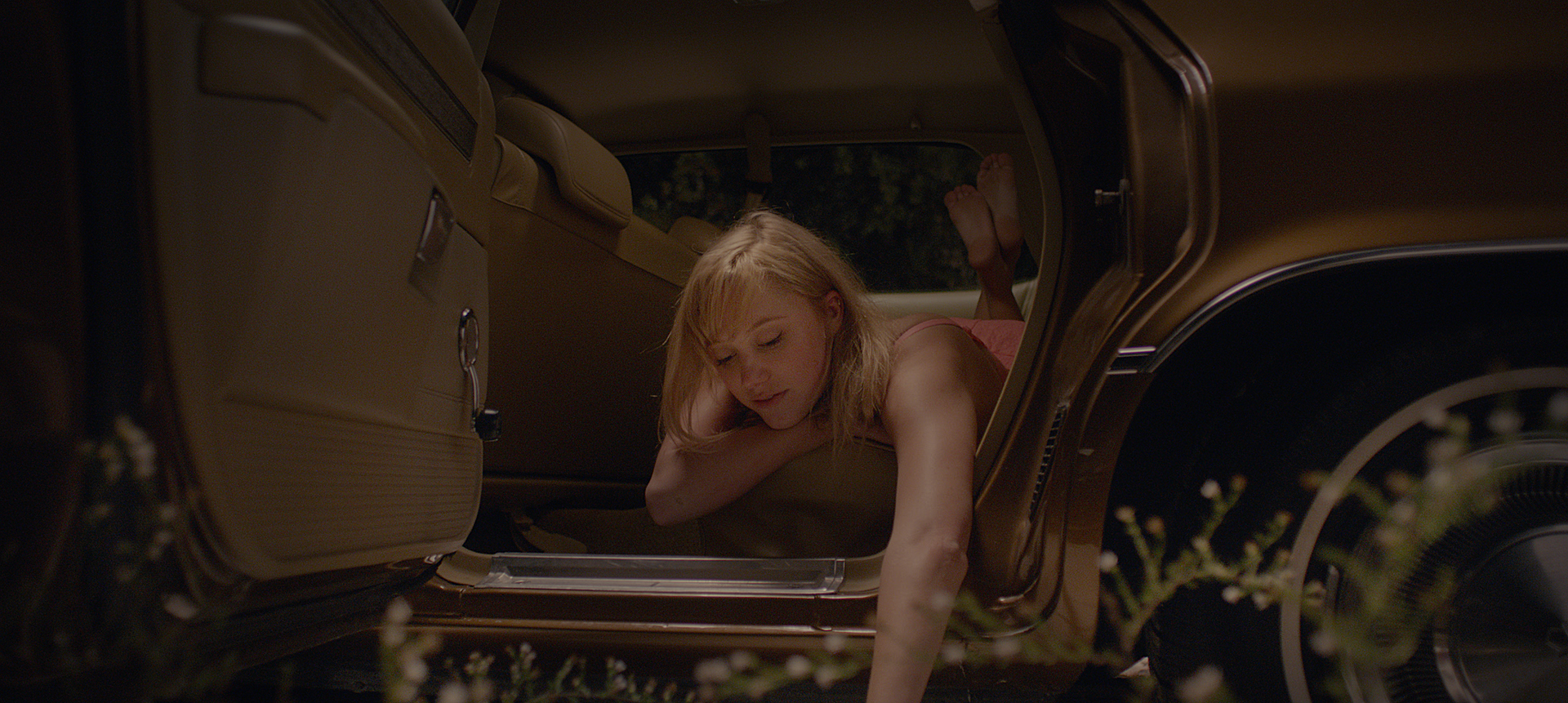
David Robert Mitchell’s new film, It Follows, fits plenty of the horror genre conventions. The heroine is a blonde teen. She and her band of friends live in a world where adults are all but absent. Tense sequences take place in abandoned buildings and lots. There’s a lot of running for your life. And by the way, it’s opening on Friday the 13th. (March 13, that is.)
But all these tropes add up to something completely fresh in Mitchell’s film, which centers on 19-year-old Jay (Maika Monroe), who finds out after a sexual encounter that she’ll now be followed by a murderous creature that shape-shifts into various human forms and will kill her if it catches her. It can look like a friend or a stranger, and it can only walk, not run. To get it off her trail, she needs to pass it on by having sex with someone else—but if it kills that person, it will turn its attention back to Jay, then the man who gave it to her, and so on down the line.
This is only Mitchell’s sophomore film (his first was the well-received drama The Myth of the American Sleepover) but he dials up the tension as impressively as far more seasoned horror auteurs—but he does it with a fresh subtlety and intelligence. Partly, he accomplishes this by playing directly to horror tropes, then twisting them slightly or turning them on their head altogether.
But Mitchell says subverting clichés wasn’t his specific intention—it’s just the result of his writing style. “I really love the genre,” he says. “There are so many horror films that I have seen and really enjoyed. After consuming and processing all this stuff, when I decided to try to write my own, I probably am very aware of some of the conventions within the genre, and then I’m trying to do my own version of that… I want to do something that’s interesting to me, and that’s maybe just shifting things in small and subtle ways that make it feel unique to me.”
Take a scene on the beach where Jay and her friend have driven in hopes of escaping the creature. We see her friend Yara approaching in the distance with the slow gait the creature normally has—but we can’t tell yet whether it’s really Yara or the creature taking her shape. The camera cuts to show Jay’s friends on the beach, and Yara is not among them. We think, it’s okay, that really is Yara, not the creature. Then Yara slowly floats into view on a raft in the ocean, so we know that Jay is indeed in trouble.
In a less nuanced film, the scene would have been jacked up with surging music to boost the fear factor, but Mitchell plays it cool—trusting the audience to be smart enough to feel the terror without aggressive violin shrieks telling them to feel it.
Not that the music isn’t a crucial part of the movie. Mitchell recruited Disasterpeace to write the score, an electronic work that, like the film, plays on the Ee! Ee! Ee! school of scary soundtracks while sounding entirely fresh. The score has a 1970s or ’80s vibe to it, as do a lot of the set pieces—but Yara spends most of the movie reading The Idiot off of a futuristic (yet also somehow retro) cellphone that’s basically two screens inside of a plastic compact shaped like a scallop shell. Mitchell says he combined these elements to make sure no one could date the movie to a particular year. “There are all kinds of things coming at you from different directions and you can’t quite place it,” he says. “[The phone] is one to suggest something that’s outside of time—something that’s more like a nightmare.”
As for the sexual nature of the movie’s premise, Mitchell demurs when asked about the symbolism. While some critics have compared the curse of the creature, spread through sex, to an STD, it’s not a clean comparison; you can’t get rid of STDs by having sex with more people. Mitchell says he was aware that viewers might make that connection, but he thinks there are much more interesting conclusions to draw. “The only time I have issue with reads on the film,” he says, “is someone suggesting that there’s any kind of puritanical message behind it—I think that’s something that often gets thrown at horror films.”
“These characters do open themselves up to danger through sex,” he says. “But it’s also a way in which they can be temporarily freed. A more interesting way of looking at it is that it’s not just necessarily sex, but sex is a part of life. The act of living opens us up to danger, and sex and love are ways in which we can temporarily push death away.”
Mitchell hopes most viewers will come to their own conclusions after seeing the film, and for what it’s worth, he’s happy that there’s a wide range of interpretation out there. “None of these things,” he says, “are things that anybody has to ‘get.'”
More Must-Reads from TIME
- Breaking Down the 2024 Election Calendar
- How Nayib Bukele’s ‘Iron Fist’ Has Transformed El Salvador
- What if Ultra-Processed Foods Aren’t as Bad as You Think?
- How Ukraine Beat Russia in the Battle of the Black Sea
- Long COVID Looks Different in Kids
- How Project 2025 Would Jeopardize Americans’ Health
- What a $129 Frying Pan Says About America’s Eating Habits
- The 32 Most Anticipated Books of Fall 2024
Contact us at letters@time.com